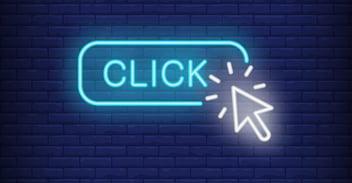For B2B companies, displaying recognizable, reputable client logos on your website shows visitors to your site that they can trust your brand.
Showcasing client logos not only highlights the client’s loyalty and endorsement of your brand; it also provides useful information to buyers. For example, it tells your prospects what types of companies can use your product, including the size of those companies, their industries, and their use cases for the product.
Adding client logos to your website is as simple as choosing the right clients, getting permission to use their logos, and deciding where to place the logos on your site.Now let’s dig into the details to do this right!
Getting Started
Customer logos show potential clients that reputable brands — maybe even their competitors — trust your product’s reliability, functionality, and quality.
Say you’re searching for a new ecommerce platform for your online jewelry store. On Shopify’s website, you can see that several other businesses in the fashion retail space use Shopify. As another business owner in this industry, you probably even recognize many of the brands listed.
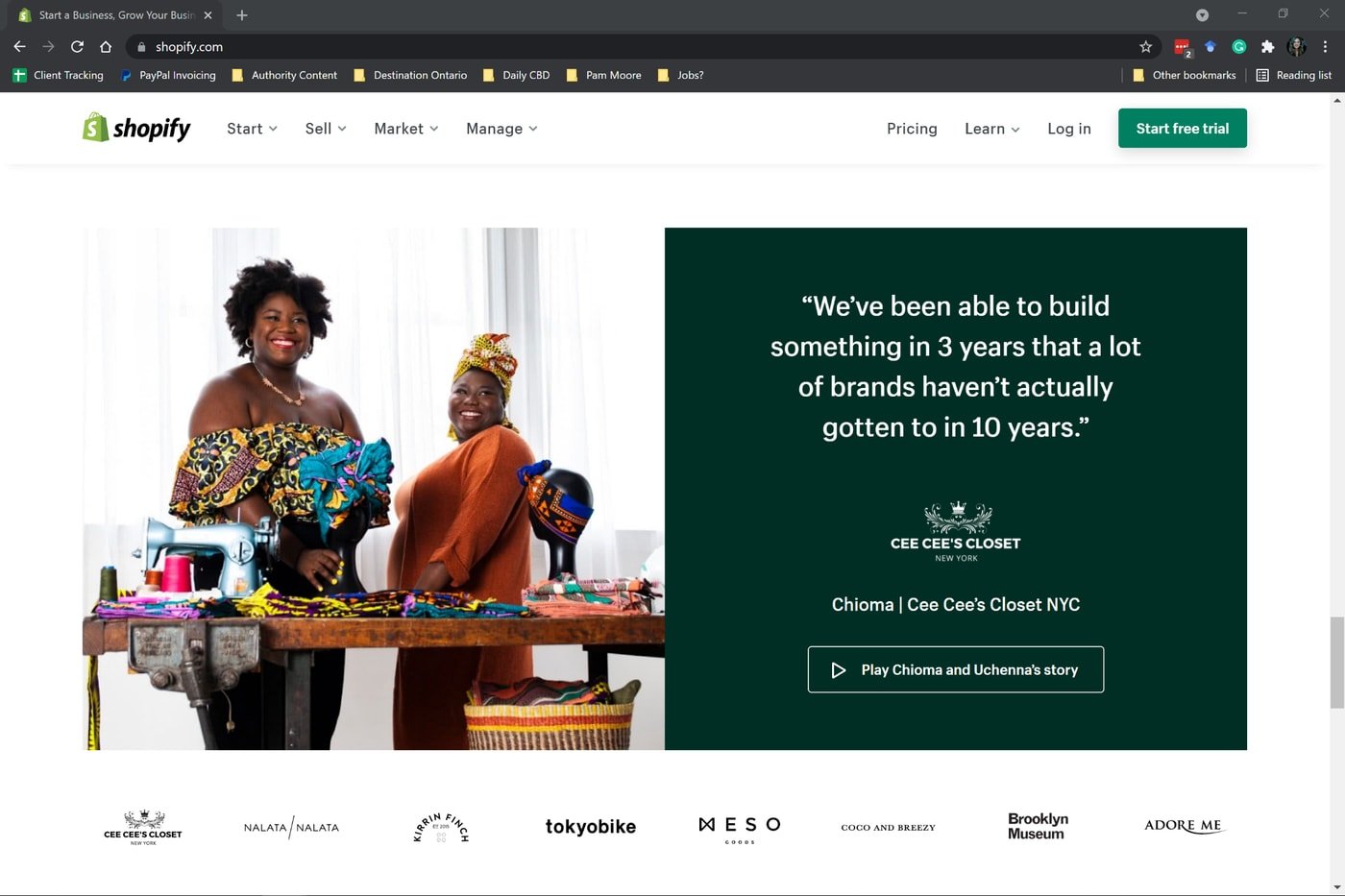
As you can see, Shopify has maximized its use of customer logos by adding written and video testimonials. But even without this extra content, the logos of reputable, successful brands alone can convince clients that your brand is trustworthy.
Shopify’s site is an excellent example because of the range of companies represented. Cee Cee’s Closet is firmly in the fashion space, whereas Brooklyn Museum is a fine art institution. New clients can probably identify with one company or another when you include a range of many types of clients.
How To Use B2B Client Logos On Your Site
Using B2B client logos on your company’s website is relatively simple, but there are a few guidelines to keep in mind.
First, you have to choose the right clients — ones that represent your brand’s effectiveness and purpose. Then, you must get permission to display your client’s logo, along with a high-res or vector graphic of the logo.
Finally, you’ll decide where on your site to display client logos, including how to incorporate them into your existing site design.
Choosing The Right Clients
Although it is nice to show potential clients a long list of all the hundreds of companies that use your product, it’s not the right approach for client logos. It’s important to carefully select brands that are respected, reputable, and representative of your company.
For example, if your business has something to do with sustainability, you might want to feature sustainable brand logos on your site. If your target audience is small retail businesses, it makes sense to include similar brand logos.
You should also steer clear from using the logos of companies that have lots of bad press, aren’t doing well, or don’t align with your brand’s values. It’s not as if this client is a secret — after all, the client can tell anyone about your product, too — but don’t use their logo if you feel like it’s incongruent with how new clients perceive your product.
Choosing the right clients is also about selecting a balanced slate of brands. Always include easily recognizable, reputable brands. If you have big-name clients, display their logos to show clients that your product can handle the big leagues, whether that means serving a large company or providing an intensive, stress-tested product.
Unless your company aims to only land massive clients, it’s a good idea to balance these big names out with some smaller businesses. This shows smaller clients that your product works regardless of company size. It also shows clients that you value small businesses and humble starts just as much as the monumental contracts from established companies.
In addition to diversifying your client logos with respect to company size, you should also diversify the type of company represented. Your B2B product probably serves more than just one industry, so make sure to show new clients just how versatile it can be with trust badges.
You don’t need to overdo it, either. Just a few trust badges from large companies can speak for themselves, like these from Mailchimp.
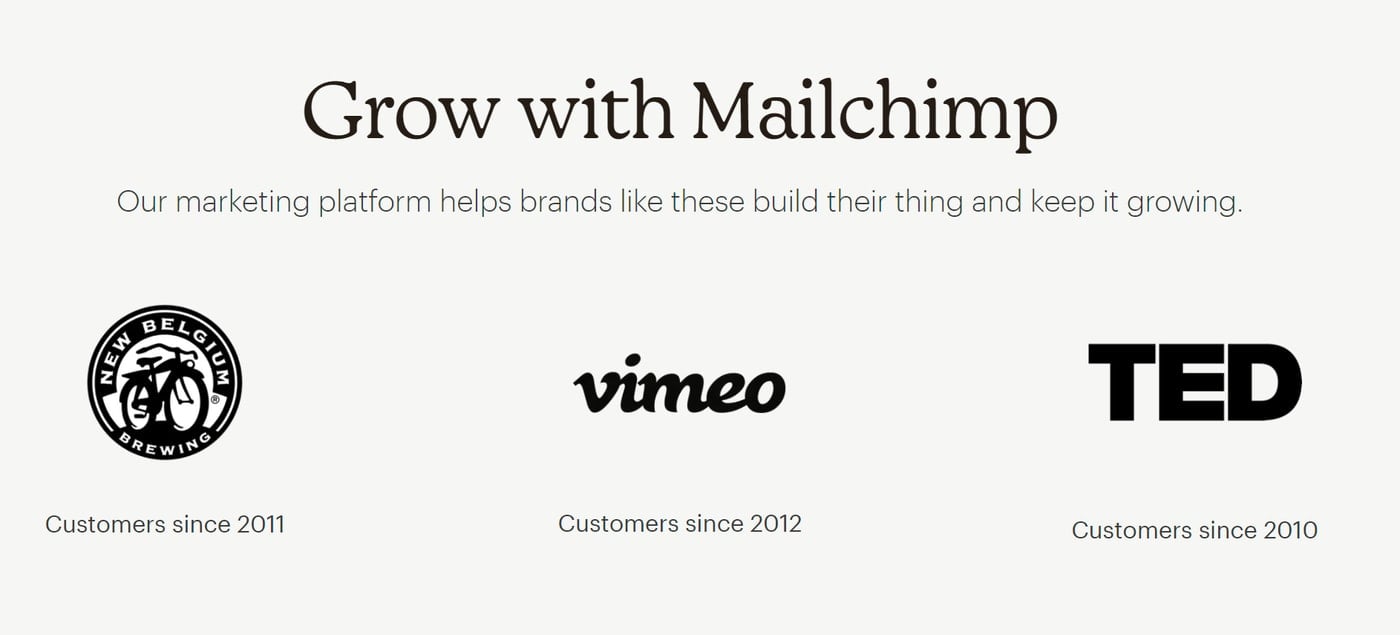
Mailchimp instantly communicates that their product works for a smaller, sustainable food and beverage business, a worldwide video platform, and a legendary media conference organization.
New Belgium, Vimeo, and TED are all vastly different businesses, but they represent Mailchimp’s versatility and reliability — and they’re popular, visually recognizable logos. Mailchimp also smartly added client retention dates to drive home the loyalty and long-term satisfaction of these customers.
Getting Permission From Clients
The only drawback of displaying client logos on your site is that you need permission from your clients. Because this logo is copyrighted, and it’s being used to sell your product (a.k.a., make a profit), you need client permission to include it on your site.
Luckily, client logos are mutually beneficial so there’s usually no reason for your clients to say no. They’re getting free advertising on your site, and they’re being held up as an example of a successful, reputable company. You can also link back to their website, which can provide value from an SEO standpoint.
Have your marketing team send an email to the client to ask permission, and make sure to ask for a vector graphic or high-res image with no background. This will make your life a lot easier when putting the client logos on your site.
Placing Client Logos On Your Site
Choosing how and where to put client logos on your site is an important decision. You want potential clients to see them, but you don’t want to shove other companies’ logos into the experience too fast.
You also don't want client logos to take away from your own branding. For this reason, you may wish to consider displaying the logos in grayscale or black and white rather than full color.
These days, many B2B companies include client logos on their landing pages below the product features. This placement provides a trust boost for buyers who’ve scrolled down your landing page to learn more, but haven’t yet clicked to the sales page or contact form.
Zoom, the powerhouse video conferencing and webinar platform, uses a wide variety of client logos on its site. These appear on the landing page:
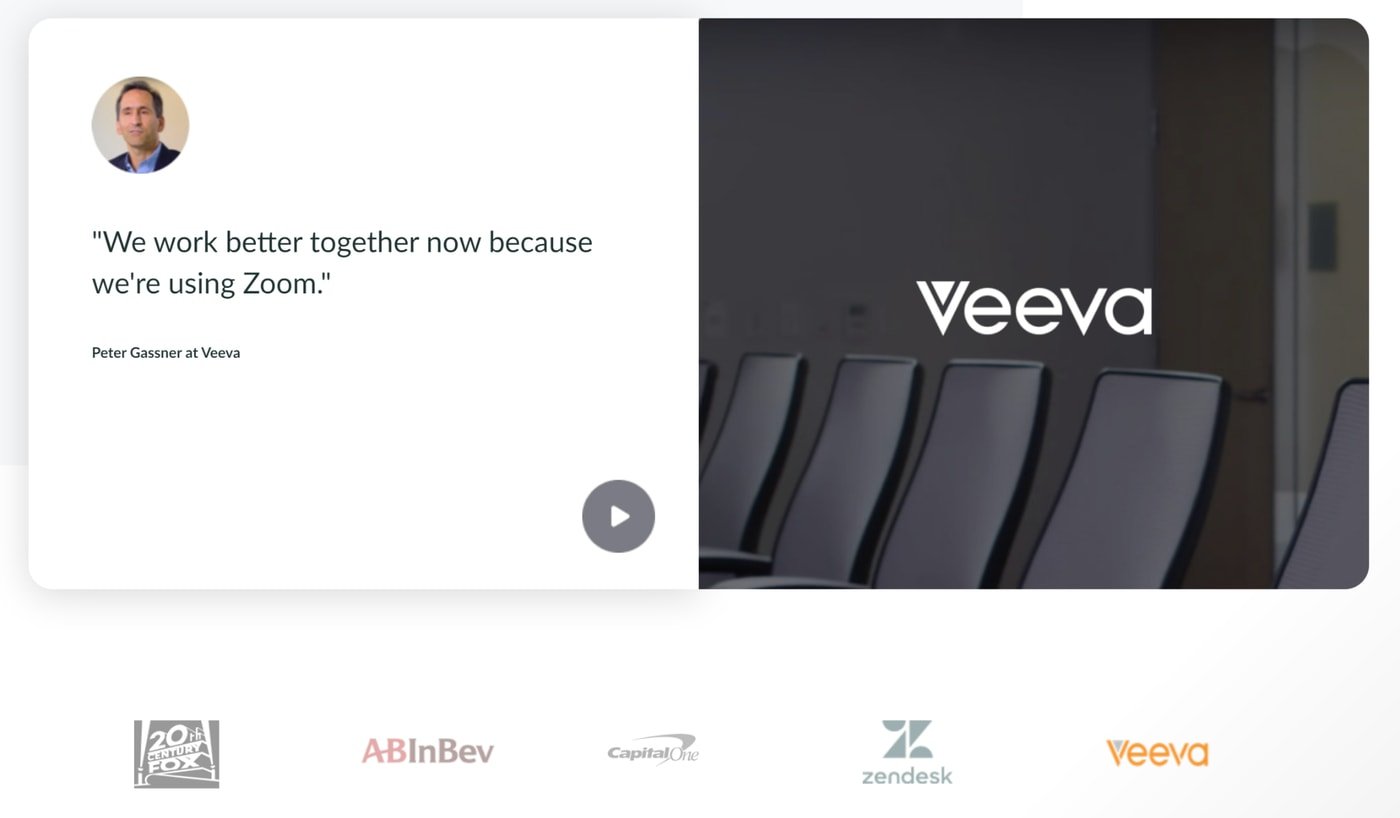 Zoom, like Shopify, has combined customer logos with customer testimonials. This one appears right after you scroll past a graphic explaining Zoom’s features, indicating it’s being used to build trust for potential clients interested enough to keep reading.
Zoom, like Shopify, has combined customer logos with customer testimonials. This one appears right after you scroll past a graphic explaining Zoom’s features, indicating it’s being used to build trust for potential clients interested enough to keep reading.
Client logos can live elsewhere on your site, too. Try displaying client logos on a page that explains features of your product or displays positive customer reviews. You can even provide personalized client logos for certain industries, like Zoom did here.

These can live perpetually at the bottom of your site, or you can place them strategically near content that relates to that industry.
Make sure to clearly indicate that the logos refer to your company’s customers, and are not partner logos or industry association logos. You can do this by placing client logos near testimonials, titling client logos, or placing them alongside content about your clients.
Taking Client Logos One Step Further
If your team has the capacity to put more time and energy into client logos, consider incorporating trust content into your content marketing strategy. Brands like Airtable and Slack have led the charge on this trend with entire blogs dedicated to in-depth testimonials, including interviews with clients.
Here’s Airtable’s case studies blog.
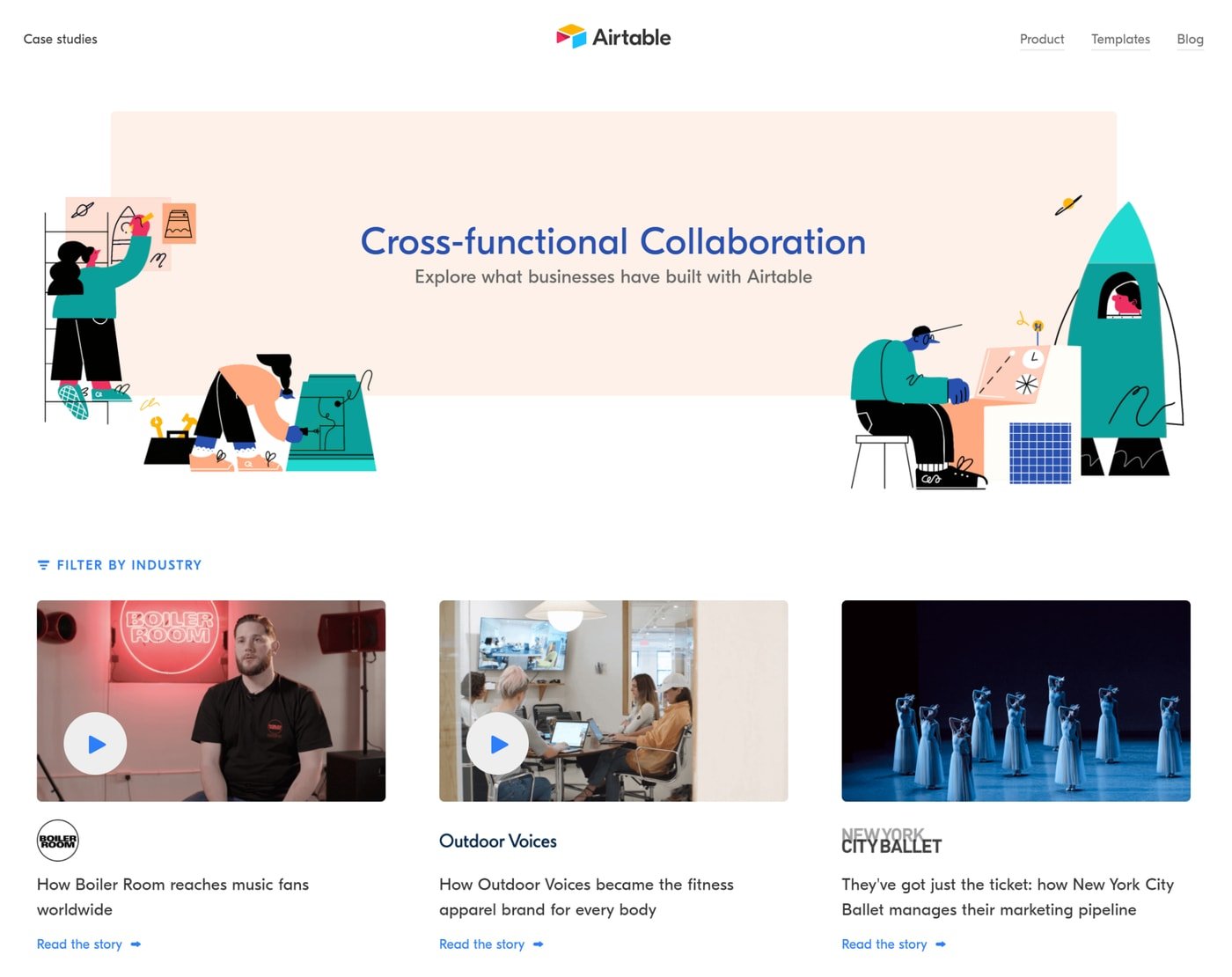
See how they’ve used brand logos to remind buyers that they recognize these brands, while also providing interesting content that showcases the usefulness of their product? That’s the goal with this extra content.
When you reach out to get permission to use a client’s logo, use this as an opportunity to ask for a testimonial, a customer press release or any content you’d like to create about the company’s use of your product. A good way to earn a client’s approval for using their logo and testimonial is to make them—rather than you—the hero of the story you tell. That way it’s a win-win for both brands.
Building Trust with Client Logos
Displaying client logos on your company’s website comes down to three steps: choosing the right clients, getting their permission, and placing them on your site.
Remember to choose clients that are recognizable and represent your brand’s values, while also providing useful context for your potential new clients. Always ask permission to use the logo, and make sure to secure an easy-to-use image file.
When placing them on your site, remember to use client logos where they can best convince your site’s visitors to keep reading. And finally, don’t hesitate to expand on your client logos with testimonials from people who work at the company, case studies, and interviews.

 8 min read
8 min read





 3 min read
3 min read
